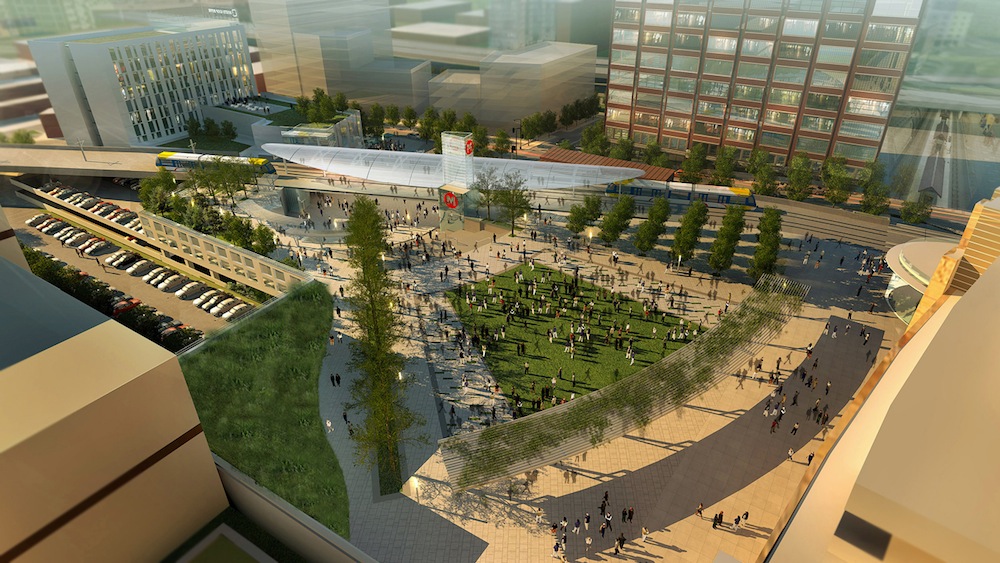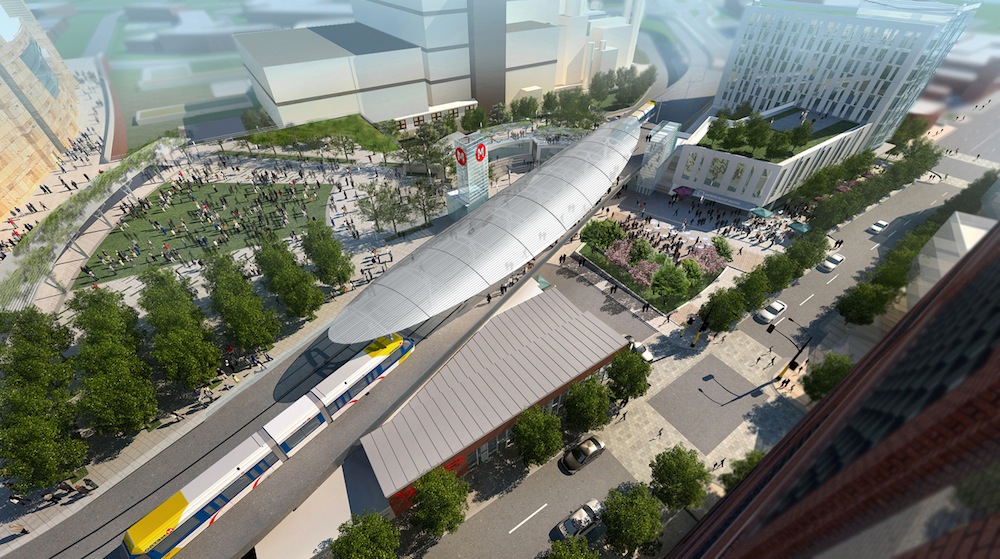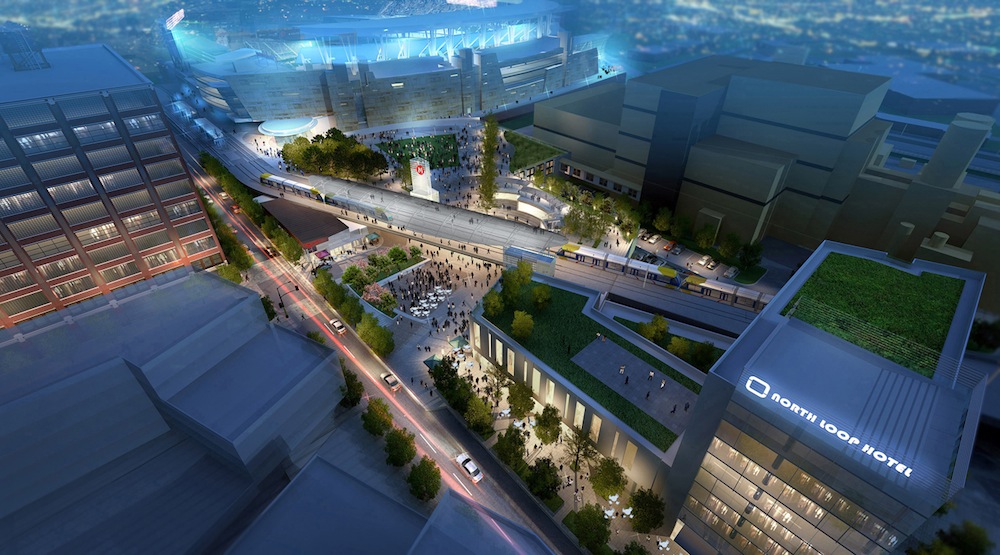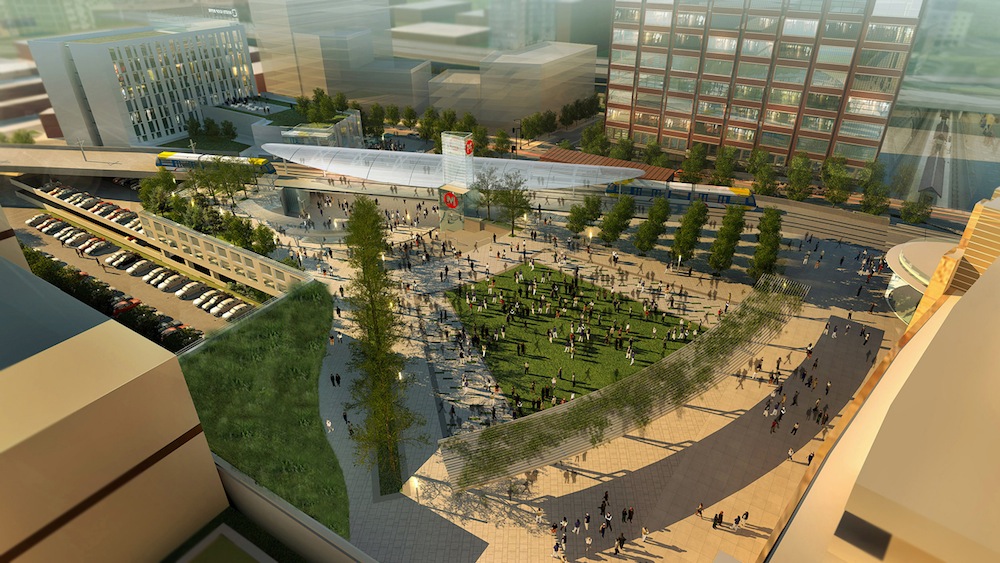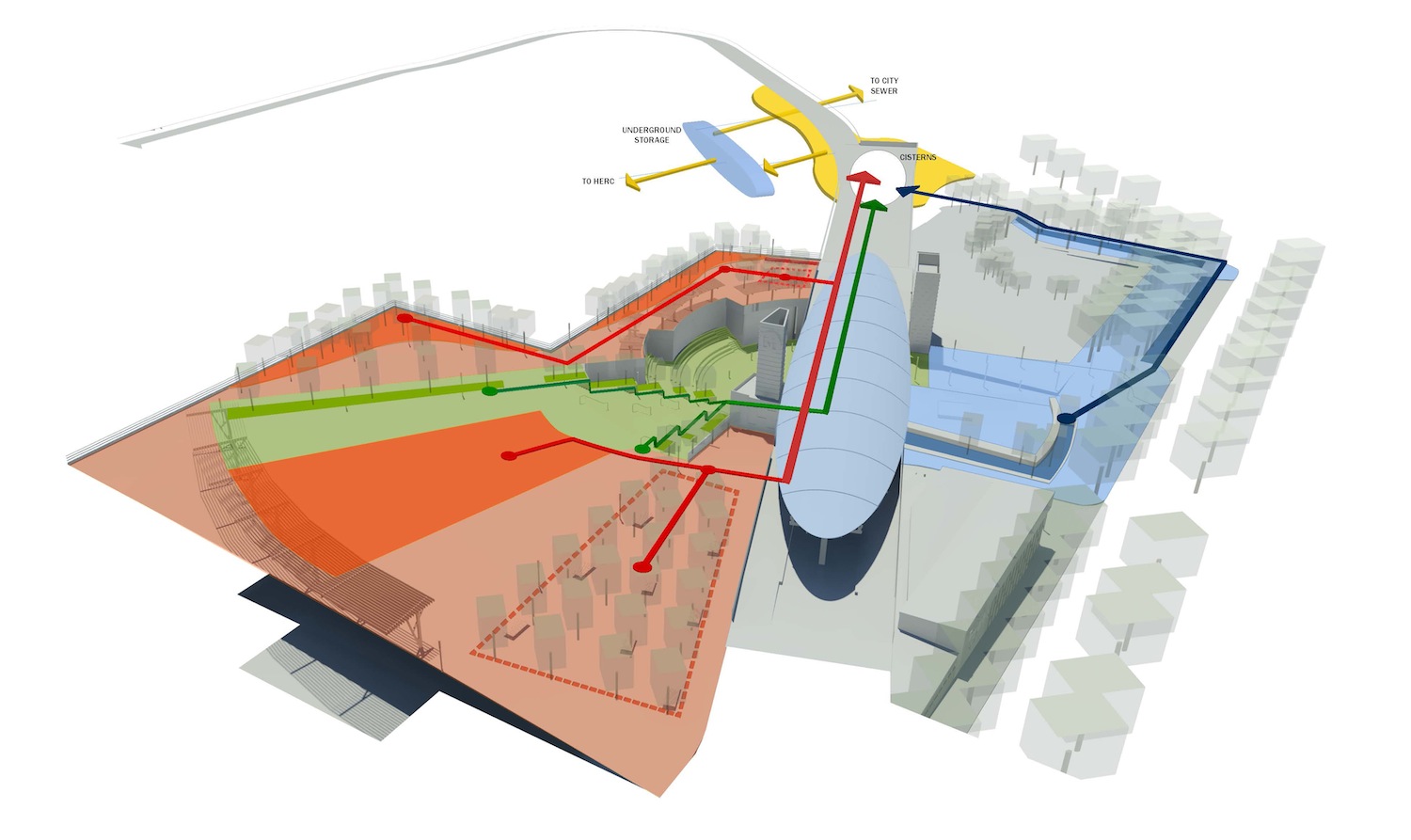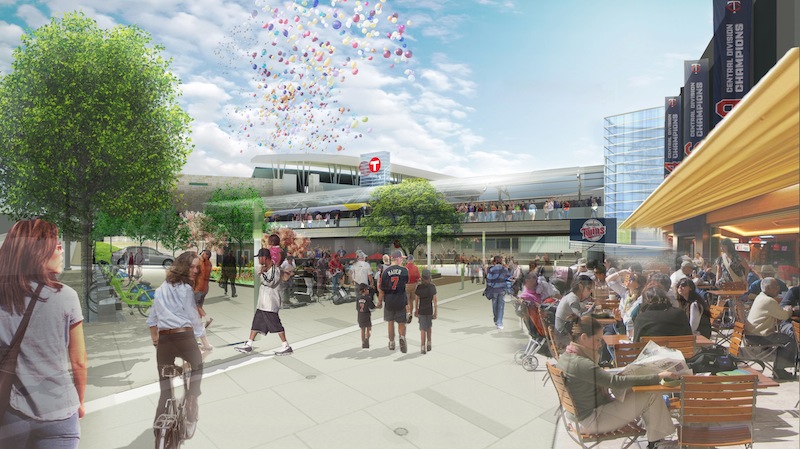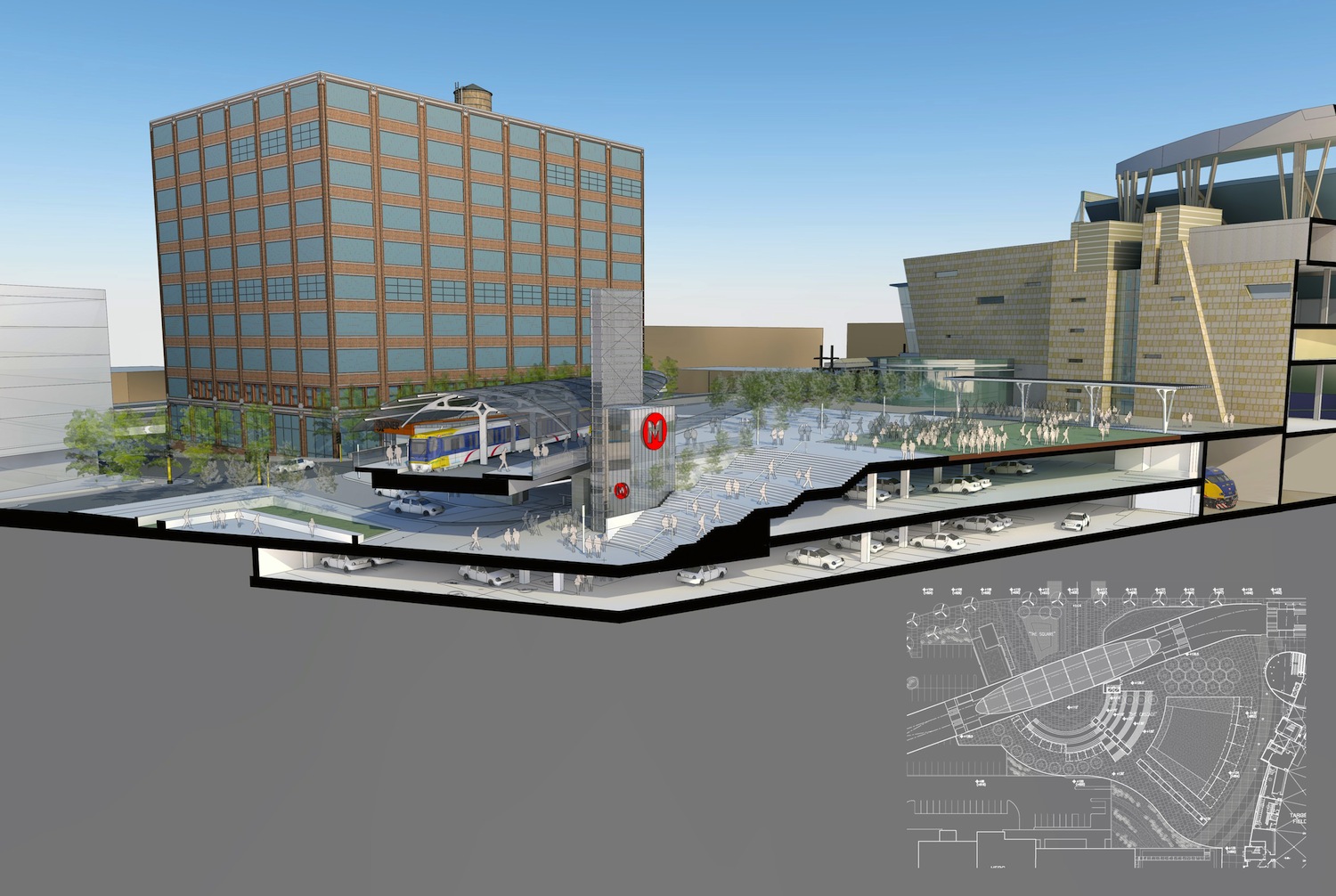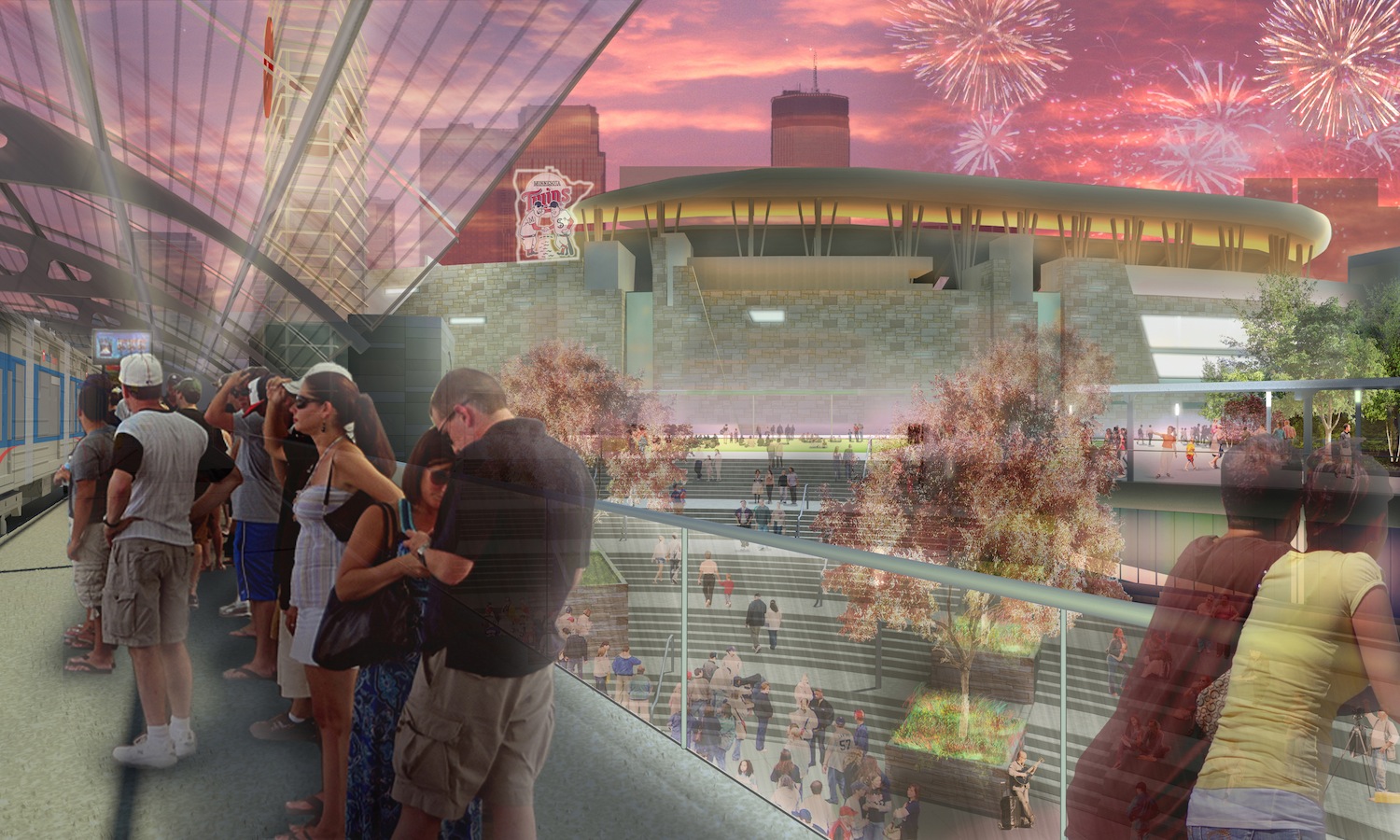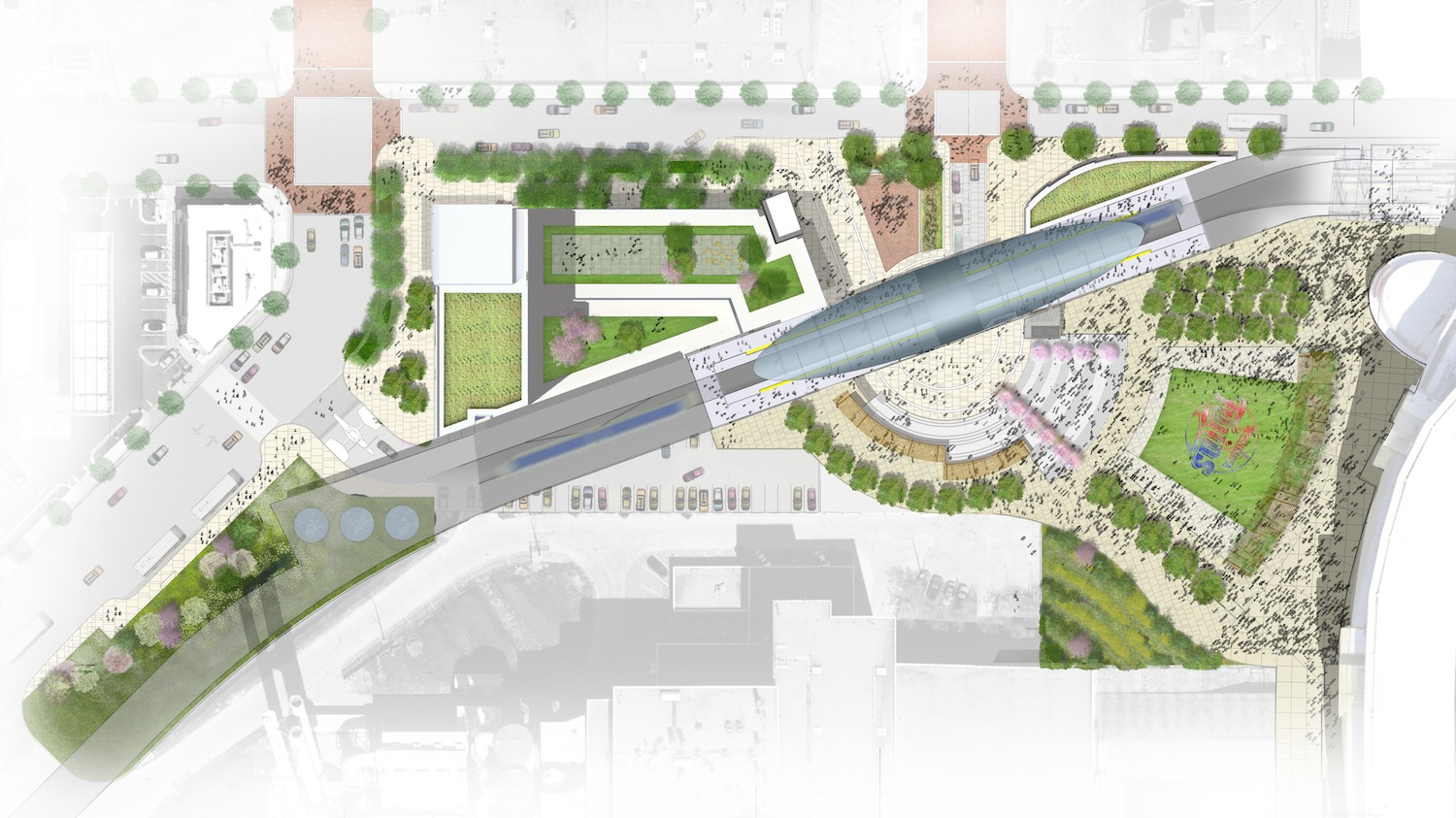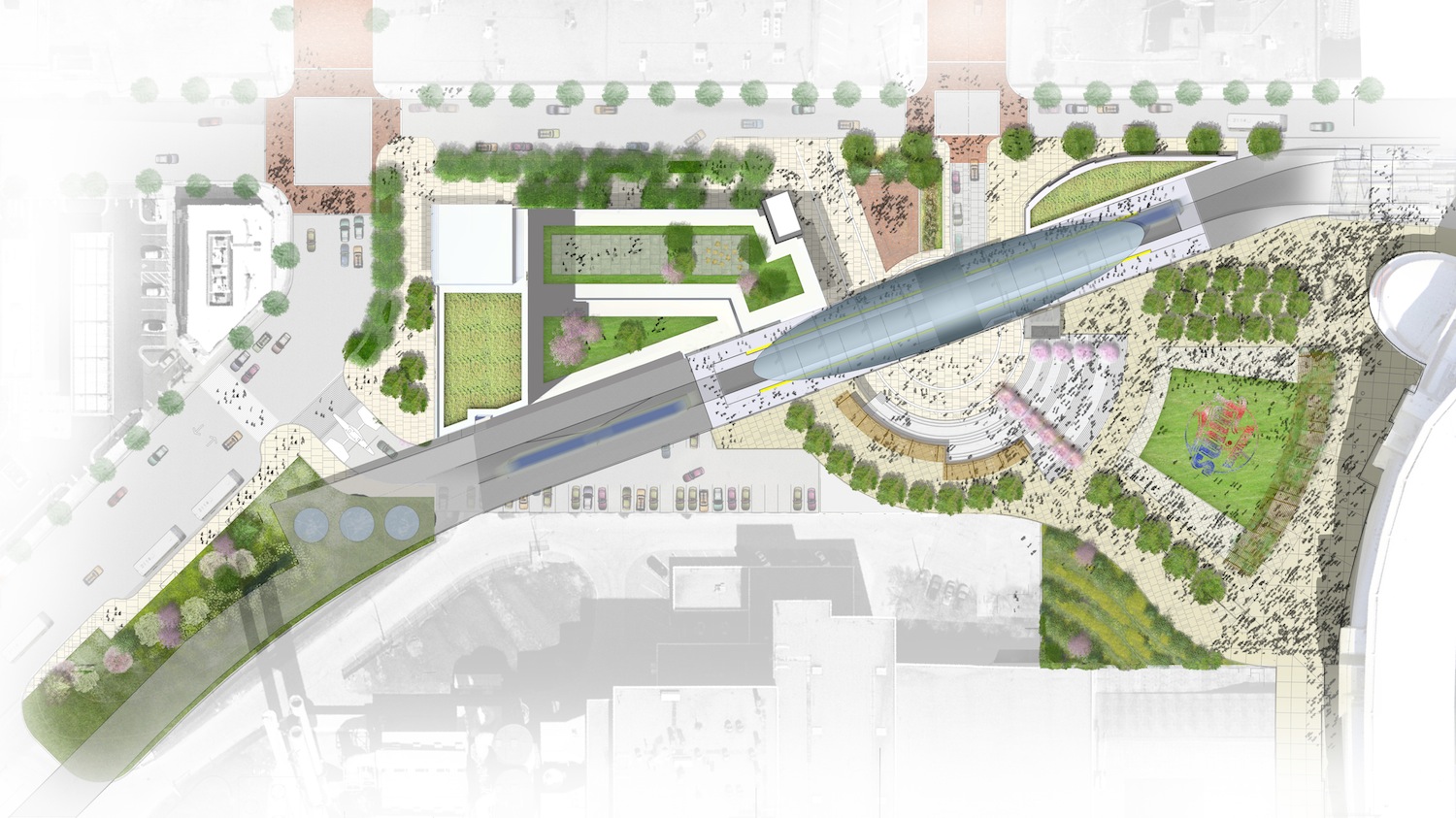Great cities are defined by great places. It is the avenues, squares, grand halls and, of course, the people who inhabit them that give a city its character. A unique blend of architecture, open space, transit, infrastructure, history, culture, and art, the Interchange represents an exciting vision of this character manifest in an urban environment. The goal for the Interchange is to create a place that is uniquely tailored to Minneapolis and its citizens—a place that is iconic, modern, and timeless. It will fulfill people’s aspirations for clean and efficient transportation while also serving as a proud calling card for those who call the city and metro area their home.
The Interchange will serve as the main transportation hub for the northern Minneapolis region. Situated a few blocks from the banks of the Mississippi River, the new station will connect approximately 500 arriving and departing trains daily, more than 1,900 daily bus routes, and hundreds of miles of bike and walking trails. This bold transit project is the result of a partnership between Hennepin County, the Hennepin County Regional Railroad Authority, and the Hennepin County Housing and Redevelopment Authority. It is funded by a mix of federal, state, and local sources, more than half of which comes from local government. During the construction phase, the Interchange will create more than 300 full-time local jobs. The design-build team is being led by EE&K a Perkins Eastman company and Knutson Construction.
Open Transit Design
History has taught us that the design visionaries behind the truly great transit destinations intended to create an infrastructure that functioned beyond as a transit hub. These projects used transit as a vehicle to design iconic spaces—the great hall, the retail passages, and the city sightlines that embody the culture of a city—while creating enormous real estate value. And this is what the City of Minneapolis and surrounding Hennepin County were trying to achieve with the Interchange. Designed by EE&K, a Perkins Eastman company, this nexus of transit and culture is based on a set of design principles called "Open Transit" that have been developed over the last 15 years.
Open Transit is a set of principles for modern station design that incorporate the surrounding spaces and additional modes of transportation to create an overall iconic place. If we are to make cities more sustainable we need to create transit places that will also sustain and enhance urban life and foster development. The Interchange exemplifies this concept in several ways: integration of all available transit modes, an orientation toward real estate development, architectural design that make places, and the integration of culture with transit design. The station will function as a backdrop to performance stage and appeal for non-transit users—people want to be there even if they aren’t using transit.
Making Development the Priority
The design of the Interchange is compact and connects seamlessly with the façade of Target Field, home to the Minnesota Twins baseball team. With such a modest footprint, the Interchange opens up the remainder of the site to maximize development opportunities. By leveraging the value of the 6th Avenue/5th Street intersection, this new development and subsequent ones within the site will help create a key link between the historic North Loop neighborhood and downtown Minneapolis. The Interchange will be a model for how transit design can stimulate economic development and foster environmental stewardship.
Transit centers designed according to the principles of Open Transit are development-oriented, meaning they catalyze investment in a region as much as they follow it. One of the current challenges of the site that the Interchange addresses is the massive influx of people to the area since the introduction of Target Field, which opened in 2010. And the opportunities it creates are even greater than the problems it solves. The team behind the Interchange explored at length how to integrate existing amenities into one new place that capitalized on a new transit line.
As a result, the hub will comprise the Cascade Amphitheater, a Great Lawn, and commuter-oriented retail. Each will provide the community with numerous programming possibilities that will serve the immediate and surrounding area year-round. The cascading staircase that can be used as an amphitheater, gathering space, and vertical transportation to the Great Lawn will draw people from all over for a relaxing picnic or a quiet respite from the bustle of city life.
The Interchange will create a new emblem of civic identity and community pride in its mix of uses by introducing the first of a new generation of facilities that truly integrate transit and culture. Like Grand Central in New York City, it will draw tourists, workers, shoppers and diners. As an oasis in a part of the city where large-scale freeway infrastructure collides with the historic grand warehouses of the North Loop neighborhood, it will fundamentally change Minneapolis and catalyze future development in the area.
Seamless Sustainability
The Interchange in Minneapolis pushes the lessons of Open Transit design even further with a holistic approach to the building as an environmentally responsible community member. It aims to help sustain Minneapolis's urban revival by incorporating features like rainwater collection for irrigation and building use, and a symbiotic use of water with recycling trash. The LEED-certified and Minnesota State-recognized B3 accredited development will use heat from the nearby Hennepin Energy Recovery Center (HERC) to heat sidewalks in the winter months. All concrete removed from the existing site will be re-incorporated back into the project, helping to curb costs related to trucking and the procurement of imported crushed rock. The new HERC administration building on the site is being designed with energy-efficient components, which will cut overall energy consumption by 30%.
Open Transit design represents the future of sustainable transit development in America’s vibrant urban centers, re-envisioning and refashioning the best of the past for the future. The Interchange in Minneapolis will be one of the most efficient demonstrations in the United States of how transportation can integrate with commerce and culture to create rich development opportunities.
Construction on the Interchange continues on schedule, and the project will open in April of 2014.
Related Stories
| Jul 3, 2014
Gehry edits Canadian skyscraper plan to be 'more Toronto'
After being criticized for the original tower complex, architect Frank Gehry unveils a new design that is more subtle, and "more Toronto."
| Jul 2, 2014
First Look: Qatar World Cup stadium design references nomadic heritage
Organizers of the Qatar 2022 World Cup, the Supreme Committee for Delivery and Legacy, recently unveiled designs for the second stadium.
| Jul 2, 2014
SHoP designs what would be Brooklyn's tallest building
JDS Development partners with SHoP to construct a 70-story building at 775-feet tall, unprecedented for downtown Brooklyn.
| Jul 2, 2014
The doctor is in the firehouse: New clinic to be built in California fire station
Designed by WRNS Studio, the Firehouse Clinic will encourage local residents with limited healthcare access to consider them as an alternative to the emergency room, especially for preventive care.
| Jul 2, 2014
Emerging trends in commercial flooring
Rectangular tiles, digital graphic applications, the resurgence of terrazzo, and product transparency headline today’s commercial flooring trends.
| Jul 2, 2014
Grimshaw's 'kit of parts' design scheme selected for Qatar sports facilities program
The series of projects, called the Al Farjan Recreational Sports Facilities, have been designed in such a way that the same basic design can be adapted to the specific requirements of each site.
| Jul 1, 2014
Peter Zumthor's LA art museum plan modified with bridge-like section across main thoroughfare
After his design drew concerns about potential damage to LA's La Brea Tar Pits, Peter Zumthor has dramatically revised his concept for the Los Angeles Museum of Art.
| Jul 1, 2014
China's wild circular skyscraper opens in Guangzhou [slideshow]
The 33-story Guanghzou Circle takes the shape of a giant ribbon spool, with the floor space housed in a series of boxes suspended between two massive "wheels."
| Jul 1, 2014
Hyper-speed rendering: How Gensler turns BIM models into beauty shots in seconds
In search of a fast rendering solution, Gensler looked to the gaming and moviemaking industries for the next breakthrough tool: Octane Render.
| Jul 1, 2014
Sochi's 'kinetic façade' may steal the show at the Winter Olympics
The temporary pavilion for Russian telecom operator MegaFon will be wrapped with a massive digital "pin screen" that will morph into the shape of any face.


